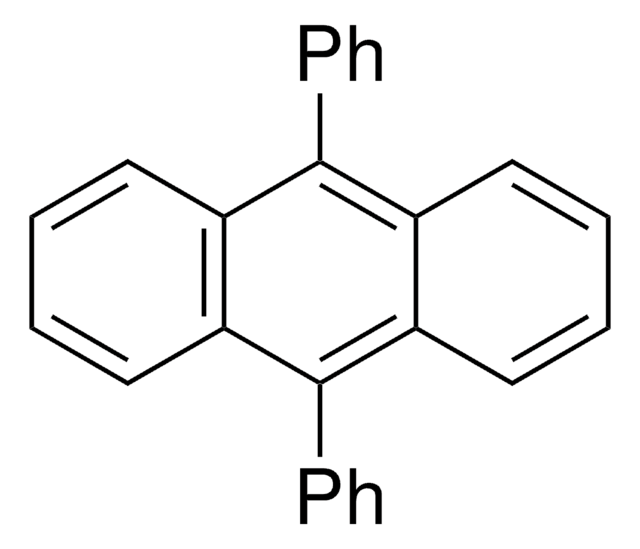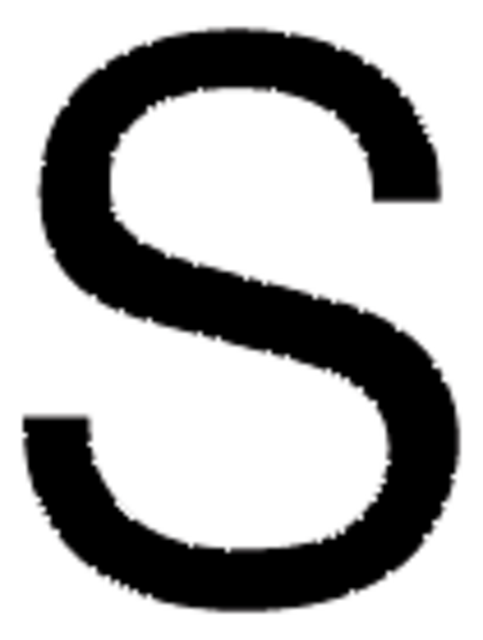15090
1,4-Bis(2-methylstyryl)benzene
BioReagent, suitable for scintillation, ≥98% (UV)
Sinónimos:
Bis-MSB
About This Item
Productos recomendados
Línea del producto
BioReagent
Análisis
≥98% (UV)
formulario
solid
mp
180-182 °C (lit.)
180-182 °C
fluorescencia
λem 416 nm in heptane
λem 419 nm in cyclohexane
idoneidad
suitable for scintillation
cadena SMILES
Cc1ccccc1\C=C\c2ccc(cc2)\C=C\c3ccccc3C
InChI
1S/C24H22/c1-19-7-3-5-9-23(19)17-15-21-11-13-22(14-12-21)16-18-24-10-6-4-8-20(24)2/h3-18H,1-2H3/b17-15+,18-16+
Clave InChI
QKLPIYTUUFFRLV-YTEMWHBBSA-N
¿Está buscando productos similares? Visita Guía de comparación de productos
Aplicación
Producto relacionado
Palabra de señalización
Warning
Frases de peligro
Consejos de prudencia
Clasificaciones de peligro
Acute Tox. 4 Oral - Aquatic Chronic 4 - Eye Irrit. 2
Código de clase de almacenamiento
11 - Combustible Solids
Clase de riesgo para el agua (WGK)
WGK 3
Punto de inflamabilidad (°F)
Not applicable
Punto de inflamabilidad (°C)
Not applicable
Equipo de protección personal
Eyeshields, Gloves, type N95 (US)
Certificados de análisis (COA)
Busque Certificados de análisis (COA) introduciendo el número de lote del producto. Los números de lote se encuentran en la etiqueta del producto después de las palabras «Lot» o «Batch»
¿Ya tiene este producto?
Encuentre la documentación para los productos que ha comprado recientemente en la Biblioteca de documentos.
Los clientes también vieron
Nuestro equipo de científicos tiene experiencia en todas las áreas de investigación: Ciencias de la vida, Ciencia de los materiales, Síntesis química, Cromatografía, Analítica y muchas otras.
Póngase en contacto con el Servicio técnico












